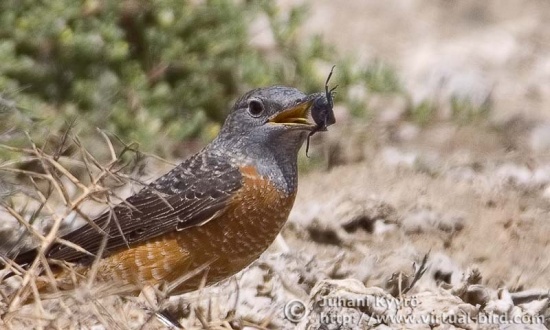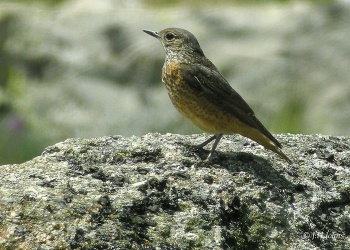Alternative name: Rufous-tailed Rock Thrush
- Monticola saxatilis
Identification
16–19 cm (6¼-7½ in)
Male
- Pale slate-blue-grey head, neck and mantle
- Underparts and outer tail feathers are chestnut-orange
- Dark brown wings
- White blaze on back
Females and Immatures
- Dark brown scaly upperparts
- Paler brown scaly underparts.
- Outer tail feathers are reddish, like the male.
Distribution
Southern Europe across central Asia to northern China.
Taxonomy
This is a monotypic species[1].
Habitat
Open dry hilly areas, usually above 1500m.
Behaviour
Breeding
It nests in rock cavities, laying 4-5 eggs.
Diet
The diet includes a wide range of insects and berries.
Vocalisation
References
- Clements, J. F., T. S. Schulenberg, M. J. Iliff, D. Roberson, T. A. Fredericks, B. L. Sullivan, and C. L. Wood. 2017. The eBird/Clements checklist of birds of the world: v2017, with updates to August 2017. Downloaded from http://www.birds.cornell.edu/clementschecklist/download/
- Wikipedia
- Collins Field Guide 5th Edition
Recommended Citation
- BirdForum Opus contributors. (2025) Common Rock Thrush. In: BirdForum, the forum for wild birds and birding. Retrieved 9 May 2025 from https://www.birdforum.net/opus/Common_Rock_Thrush
External Links
GSearch checked for 2020 platform.1





